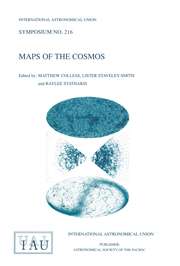No CrossRef data available.
Article contents
Second-parameter Globular Clusters in the Milky Way and in M33 as Tracers of Mass Loss from M31 in the Early Epoch?
Published online by Cambridge University Press: 03 August 2017
Abstract
Core share and HTML view are not available for this content. However, as you have access to this content, a full PDF is available via the ‘Save PDF’ action button.
I suggest that the bulk of the “young”, second-parameter globular clusters (SPGCs) observed in the outer halo of our Galaxy and recently found in the other massive spiral of the Local Group (LG), M33, may have originated due to mass outflow from M31 and subsequent accretion of gas on the Galaxy and M33 in the early epoch.
Information
- Type
- Part 1. The Star Clusters of Local Group Galaxies
- Information
- Symposium - International Astronomical Union , Volume 207: Extragalactic Star Clusters , 2002 , pp. 163 - 164
- Copyright
- Copyright © Astronomical Society of the Pacific 2002
References
Da Costa, G. S.
1994, In ESO Conference and Workshop Proc., 51, The Local Group: Comparative and Global Properties, ed. Layden, A., Smith, R.C. & Strom, J., 101
Google Scholar

